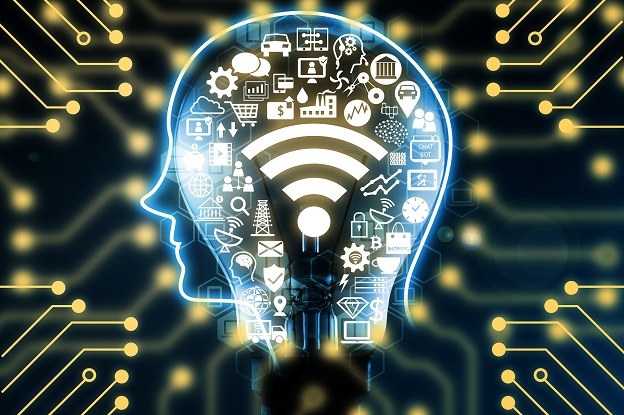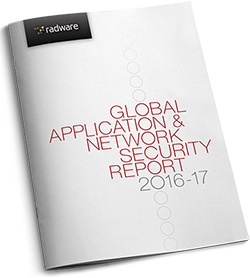How are IoT Skills different than IT Skills?
I believe by now, most people have come to know the perfect harmony, a revolution, taking place whereby automation and interconnectivity is intersecting newly developed or innovated devices which can be controlled and communicated remotely. This revolution is called the Internet of Things (IoT) and is transforming once-stodgy manufacturers into massive technology giants, old electric companies into the world’s largest interconnected network of lights, meters and transformer stations, and have the possibility to permeate nearly every aspect of our lives, including the ability to transform our love lives and the prospect of our health and quality of living.
Ironically, there is no uniform definition of the Internet of Things. It can be defined as the following from a technical perspective: Internet of Things is the network which can achieve interconnection of all things anywhere, anytime with complete awareness, reliable transmission, accurate control, intelligent processing and other characteristics by the supportive technologies, such as micro-sensors, RFID, wireless sensor network technology, intelligent embedded technologies, Internet technologies, integrated intelligent processing technology, and nanotechnology.

So given these massively disruptive changes, how does one foretell what skills will be the most in-demand as these old industries retool for tomorrow’s needs and new industries are given birth?
According to the recommendations of the International Telecommunication Union, the network architecture of IoT consists of five distinct layers:
- the sensing layer
- the access layer
- the network layer
- the middleware layer and
- application layers.
Sensing layer: The main features of this layer are capturing the interest of information large-scale with various types of sensors, identifying intelligently, and sharing the captured information in the related units in the network.
The access layer: This layer’s main function is to transfer information from the sensing layer to the network layer through existing mobile networks, wireless networks, wireless LANs, satellite networks and other infrastructure.
Network layer: This layer’s main function is to integrate the information resources of the network into a large intelligence network with the Internet platform, and establish an efficient and reliable infrastructure platform for upper-class service management and large-scale industry applications.
The middleware layer: This layer’s main function is to manage and control network information real-time, as well as providing a good user interface for upper layer application. It includes various business support platforms, management platforms, information processing platforms, and intelligent computing platforms.
Application layer: This layer’s main function is to integrate the function of the bottom system, and build the practical application of various industries, such as smart grids, smart logistics, intelligent transportation, precision agriculture, disaster monitoring and distance medical care.
[You might also like: BrickerBot.3: The Janit0r is back, with a vengeance]
It’s anyone’s guess really on what will be the killer application and platform from which most of this new regime will be built, however early indications are that the IoT transformation will require deep cross-technology talent with a special focus on the following four broad areas:
1. Networking (includes sensing)
2. Applications & Automation (includes middleware)
3. Data – especially Big Data
4. Security
Let’s see how each of these areas significantly depart from their traditional talent pools and understand what will be an acute focus item as the IoT world continues to grow.
Networking
There exists an almost bewildering choice of connectivity options for electronics engineers and application developers working on products and systems for the Internet of Things (IoT).
First, much has been made about IoT running across Low Power Lossy Networks (LLN) exclusively. For those of you not familiar, Low-Power and Lossy Networks (LLNs) are a class of network in which both the routers and their interconnects are constrained. LLN routers typically operate with constraints on processing power, memory, and energy (battery power). Their interconnects are characterized by high loss rates, low data rates, and instability. LLNs are comprised of anything from a few dozen to thousands of routers. However the truth is that just some classes of more ‘sensor-like’ IoT devices are being planned for this type of network, and other IoT devices with more direct access to the internet are leveraging other more common or newer protocols.
For example, many communication technologies are well known such as Wi-Fi, Bluetooth, ZigBee and 2G/3G/4G cellular, but there are also several new emerging networking options such as Thread as an alternative for home automation applications, and Whitespace TV technologies being implemented in major cities for wider area IoT-based use cases. Depending on the application, factors such as range, data requirements, security and power demands and battery life will dictate the choice of one or some form of combination of technologies. These are some of the major communication technologies on offer to developers.
Here are a number of communication protocols to watch for beyond normal IT communication protocols, which individuals can educate themselves on today:
– Zigbee
– Z-Wave
– 6LowPAN
– SigFox
– Neul
– NFC
– LoRaWan
Of course in the end, really understanding how devices can be communicated to in an efficient and reliable manner will be key! The more one understands the technologies listed above, the better chance they have of remaining relevant in today’s marketplace!
Applications & Automation
Applications are the heart and soul of how an IoT device is either used or deployed.
Applications drive the use, efficiency, or novelty of the connected device.
Although the debate will remain open for some time to come on what platforms for code writing will prove to be the largest adopted type, we can say for certain that automation will be a key element of the way IoT is deployed, managed and maintained.
Automation will most certainly mean technologies such as OpenStack and other SDN based automation systems along with Rest and SOAP API knowledge and the ability to code BOTS of all types.
When it comes to code writing there are about ten different languages that float to the top of the consideration pool when it comes to programming embedded systems. They range from general-purpose languages like C++ and JavaScript to embedded-specific choices like Go and Parasail. Each offers advantages and disadvantages. After you’ve reviewed the following pages to see what we’ve come up with, meet us in the comments section below to let us know what your preferred language options are when you’re considering embedded and IoT development projects. The following is a powerful list to consider moving your knowledge base to:
– C
– C++
– B#
– Rust
– JavaScript
– Parasail
– Forth
– Go
– Python
– Assembler
Of course in the end, these platforms all have pluses and minuses and were designed to solve some architectural problems in code writing. Gaining a powerful understanding of how each of these can be leveraged for the IoT community will be key! As with the networking technologies, the more one understands the technologies listed above, the better chance they have or remaining relevant in today’s marketplace!
Data Analytics – especially Big Data
The future of technology lies in data and its analysis. More objects and devices are now connected to the Internet, transmitting the information they gather back for analysis. The goal is to harness this data to learn about patterns and trends that can be used to make a positive impact on our health, transportation, energy conservation, and lifestyle. However, the data itself doesn’t produce these objectives, but rather it’s solutions that arise from analyzing it and finding the answers we need.
Two terms that have been discussed in relation to this future: big data and IoT. It’s hard to talk about one without the other, and although they are not the same thing, the two practices are closely intertwined.
As it relates to data, this disruptive technology requires new infrastructures, including hardware and software applications, as well as an operating system; enterprises will need to deal with the influx of data that starts flowing in and analyze it in real-time as it grows by the minute.
[You might also like: BrickerBot – The Dark Knight of IoT]
That’s where big data analytics tools become a central piece to the IoT revolution, as they are capable of handling masses of data transmitted from IoT devices that produce a continuous stream of information.
But just to differentiate the two, the IoT delivers the information from which big data analytics can draw the information to create the insights required of it.
However, the IoT brings data on a different scale, so the analytics solution should accommodate its needs of rapid ingestion and processing followed by an accurate and fast extraction. In the future, IoT companies will deliver real-time analytics on massive sized datasets, and essentially condense a full-rack database into a small server processing up to 100TB, so minimal hardware is required.
The next generation analytics database leverages GPU technology, allowing an even further downsizing of the hardware, i.e. big database in the car, or 5 TB on a laptop. This helps IoT companies correlate the growing number of data sets, which helps them get real-time responses and adapt to changing trends, solving the size challenge without compromising on the performance.
The next generation data base administrator, data scientist and data analyzers will all be advantaged keeping their finger on the pulse of these technological upheavals!
Security
Recognizing the massive problem of IoT, in early January 2017, the FTC launched a competition for security solutions to help solve the problem with a $25,000 reward. The five competition judges will grade submissions on how well the submitted IoT device’s security tools work and how user-friendly and scalable they are. The tool should focus on vulnerabilities in IoT device software specifically caused by out-of-date software or firmware, though additional features — such as default password settings — are acceptable, as well. The competition focuses the development of a tool to help with IoT device security, rather than policy or legislation.
While the FTC’s effort and the efforts of many others to tackle security issues regarding IoT devices is laudable, it isn’t enough to ensure that we can leverage the full power of this new technology in a secure environment.
Some of the biggest categorical security issues are the following:
– Configuration and IoT Operational Security: There also must be a sound plan for installing security updates on IoT devices. Each consumer will likely soon own scores — if not hundreds — of connected devices. The idea of manually installing updates on so many devices is definitely out of the question, but having them automatically pushed by manufacturers also can be a risky business. Proper safeguards must be put in place to prevent updating interfaces from becoming security holes themselves.
– IoT Gateways: Many IoT devices access the internet via consolidated software ‘gateways’ which act as controllers for their respective IoT networks. These gateways that connect IoT devices to company and manufacturer networks need to be secured as well as the devices themselves. IoT devices are always connected and always on. In contrast to human-controlled devices, they go through a one-time authentication process, which can make them perfect sources of infiltration into company networks. Therefore, more security needs to be implemented on these gateways to improve the overall security of the system.
– Big Data / Data Security: We spoke above about the enormous potential for Big Data and Analytics with IoT, but there is an equally big problem created from this effort and that’s Data Security. More effort needs to be made to secure IoT-related data to ensure the privacy of consumers and the functionality of businesses and corporations. In addition, much more can be done to secure the growing repositories where IoT data is being stored, which can become attractive targets for corporate hackers and industrial spies who rely on big data to make profits. In the wake of massive data breaches and data theft cases we’ve seen in recent years, more effort needs to be made to secure IoT-related data to ensure the privacy of consumers and the functionality of businesses and corporations.
What is evident is that the IoT will become an important part of our lives very soon, and its security is one of the major issues that must be addressed via active participation by the entire global tech community. Will we be able to harness this most-hyped, emerging technology that will undoubtedly revolutionize the world, or will we end up opening a Pandora’s Box that will spiral the world into a new age of mayhem and chaos? Let’s hope for the former.
Hopefully this helps give you a snapshot of the key technologies from which the IoT industry will be built and employ talent!
Best of luck!




